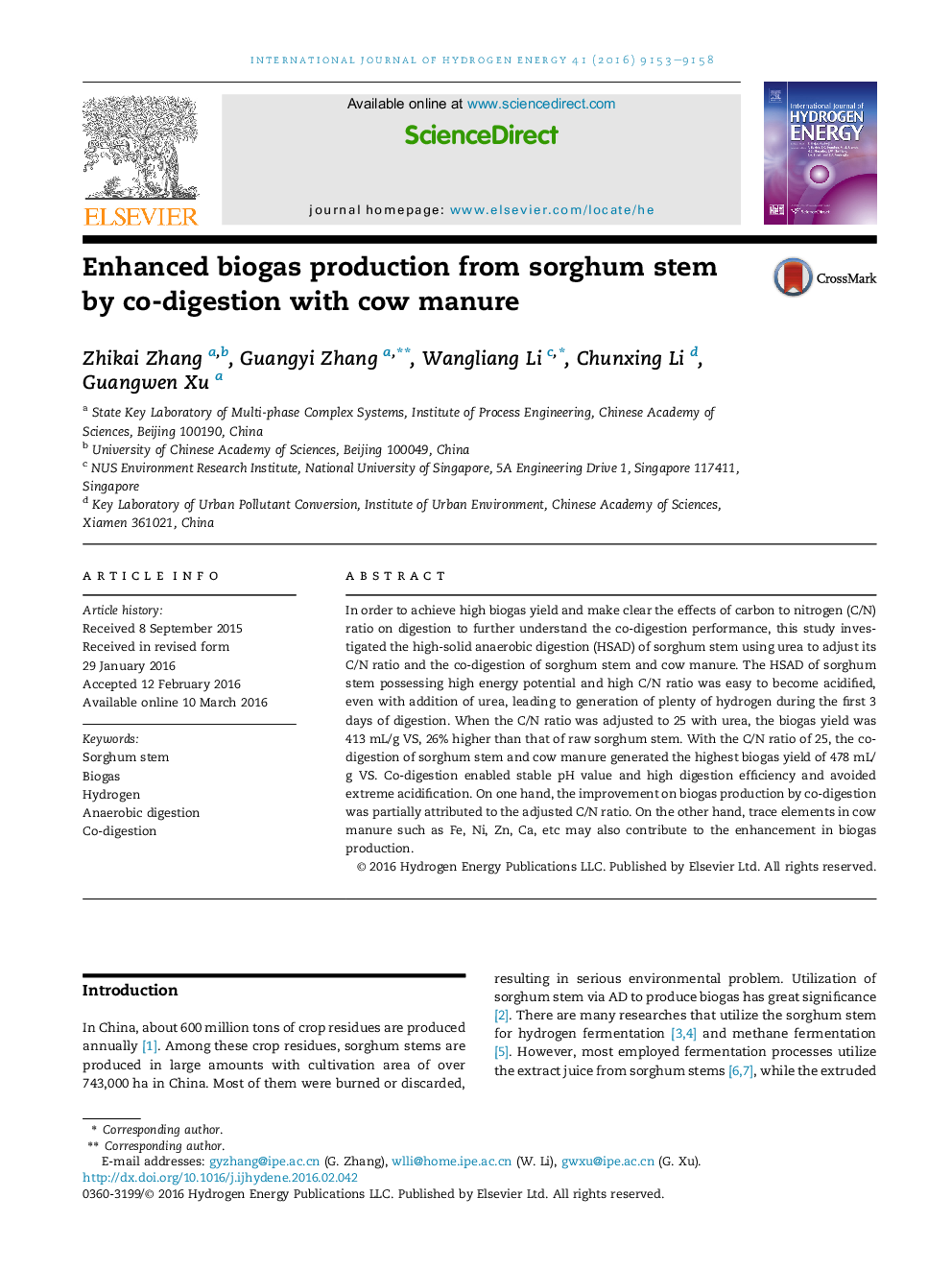| Article ID | Journal | Published Year | Pages | File Type |
|---|---|---|---|---|
| 1269933 | International Journal of Hydrogen Energy | 2016 | 6 Pages |
•The biogas yield for sorghum stem was 413 mL/g VS with the C/N ratio of 25.•Co-digestion of sorghum stem and manure had the highest biogas yield, 478 mL/g VS.•Co-digestion enabled a more stable AD process and avoided extreme acidification.•Certain trace elements in manure may help to enhance the biogas production.
In order to achieve high biogas yield and make clear the effects of carbon to nitrogen (C/N) ratio on digestion to further understand the co-digestion performance, this study investigated the high-solid anaerobic digestion (HSAD) of sorghum stem using urea to adjust its C/N ratio and the co-digestion of sorghum stem and cow manure. The HSAD of sorghum stem possessing high energy potential and high C/N ratio was easy to become acidified, even with addition of urea, leading to generation of plenty of hydrogen during the first 3 days of digestion. When the C/N ratio was adjusted to 25 with urea, the biogas yield was 413 mL/g VS, 26% higher than that of raw sorghum stem. With the C/N ratio of 25, the co-digestion of sorghum stem and cow manure generated the highest biogas yield of 478 mL/g VS. Co-digestion enabled stable pH value and high digestion efficiency and avoided extreme acidification. On one hand, the improvement on biogas production by co-digestion was partially attributed to the adjusted C/N ratio. On the other hand, trace elements in cow manure such as Fe, Ni, Zn, Ca, etc may also contribute to the enhancement in biogas production.
